Media | Articles
The New Retro Wave: 13 Cars of the Present Inspired by the Past
Renault has recently showed off something truly fabulous: the Renault 17 x Ora Ïto. A collaboration between Renault and a French designer, the carmaker revived its largely forgotten coupe with a restomod twist, combining 1970s styling and materials (wool seats!) with a modern electric powertrain, updated wheels and tires, and reimagined LED lighting.
Will Renault build it? Of course not; it’s not enough of an SUV for today’s customers, and given the quality of the work, we’re not sure even the wealthiest Renaultphiles would splash out whatever it must have cost to restomod the unloved 17.
But following cars like the new Renault 5, the company’s announcement that a Renault 4 and a Twingo will follow, plus the launch of the Alpine A110 back in 2017, shows that the French firm really understands the value of heritage. Renault isn’t the only one, either: Below we’ve corralled the A110, Renault 5, and Renault 17 with ten other recent models that have kept one eye on the past as they’ve looked toward the future.
After the New Beetle, Ford Thunderbird, MINI, and Chevrolet SSR of the 1990s and early 2000s, these are the cars of the second retro wave . . .
Alpine A110

Along with the Ford Bronco, the Alpine A110 is probably one of the best examples of how to revive a classic design in the modern day. Put the 2017 A110 alongside the 1963 original and it’s easy to see their differences—not least size, small though the current car is by 2020s standards—and easy too to see where the modern car takes its inspiration. But in isolation, on the road, the A110 simply looks fantastic in its own right; fresh, compact, beautifully detailed and well-proportioned.
Marketplace
Buy and sell classics with confidence
Alpine has even managed to update the original’s four-headlight layout with a modern light signature that’s among the most distinctive on the road, impossible to mistake for any other car, and the A110’s shape hides well that the latest model is now mid-, rather than rear-engined. It’s the spiritual link that also matters though: The classic A110 was among the best sports cars of its era, and the A110 manages to replicate that feat.
BMW Vision Neue Klasse

For a vehicle that will define BMW’s future, the BMW Vision Neue Klasse concept unveiled early in 2024 has more than a few links to some of its past masters. The clue is partly in the name: Neue Klasse is the term BMW gave to its saloon cars of the 1960s as it sought reinvention and postwar profitability.
Vision Neue Klasse is an evolution of the i Vision Dee concept shown at CES in January 2023, and both have distinctive proportions, with more than a hint of the original E21-generation 3 Series about them, from the slim grille incorporating the lights, to the slight downward slope of the boot lid and its own thin strip of taillights. The Hofmeister kink detail in the rear side glass makes a return, having been absent in some recent BMWs, too. It isn’t as overtly retro as some others here, but BMW is definitely showing signs of acknowledging its past.
Fiat 500e

We could have included the current MINI here, but as each generation of BMW’s retro small car arrives, it begins to look more and more a parody of the 2001 R50 Mini, rather than an homage to the classic 1959 car. Fiat’s 500, now electrified as the Fiat 500e, is arguably more successful in capturing the spirit, as well as merely the design cues, of its classic predecessor.
Launched in 2020, it feels like a natural evolution of the Panda-based 500 that arrived in 2007, fifty years after the classic Nuova 500. More than 60 years on all the cues are still there, from the bubbly roofline to the clamshell hood (which today does house the powertrain, unlike the rear-engined original) and its feature line that runs the circumference of the car, and the rounded headlamps (cleverly bisected by the hood on today’s car). The 500e’s interior is a charming remake too, a high-tech digital gauge pod standing proud of the dash just like the classic 500’s, and a mid-dash storage tray also echoing the original.
Ford Bronco

Retro has worked pretty well for Ford in the 20th century, with 2005’s Mustang a clear homage to the original car, and the Ford GT launched a year earlier being a spitting image of the Le Mans–winning GT40. So in reviving the Bronco name, last seen in 1996, why not do the same?
Thus Ford’s Jeep Wrangler rival arrived in 2021 with clear links to the 1966 truck that kicked off the lineage. While the original was Ford’s entrant into what would become the Sports Utility Vehicle segment though, today’s Bronco—with its round headlights, chunky lines, and removable doors—serves real enthusiasts, with off-road packages and high-performance Raptor variants, while more prosaic models like the Explorer and Expedition can play the sensible family role.
Honda E

Its life might have been short, stymied by high pricing and an uncompetitive range, but one thing the recently departed Honda E will be remembered for more than anything else is its cute, quirky, and distinctly classic-inspired design cues.
The company sold barely 12,000 units of its novel small car between 2020 and 2024, though nowhere near U.S. shores, sadly. In the U.K., prices nudged £30,000, steep for a car with a range of only 131 miles. It was a city car through and through, however, and while never as dramatic as the 2017 concept that spawned it, the E had clear links to the original Honda Civic of the 1970s, from its round-eyed face to the curve of its C-pillar. Even the two-spoke steering wheel and the five-screen dashboard (two being digital mirror displays) has a hint of the classic Civic’s cabin.
Hyundai N Vision 74

The N Vision 74 evokes a period that Hyundai itself didn’t even meaningfully contribute to. The year references not the company’s first car but its first concept, the 1974 Pony penned by Giorgetto Giugiaro. The first production Hyundai appeared a year later, the rather more toned-town and now five-door Pony.
Neither concept nor production Pony had the N Vision 74’s attitude. Instead, it’s more of a cyberpunk reimagining of the concept, brought screaming into the mid-2020s with a fuel-cell electric powertrain. The wedge-shaped styling, slatted rear window, and turbofan wheels directly reference the mid-’70s, while the wild aero and pixel lights bring it bang up to date.
Nissan Z

Whether you call it the Z-car, Fairlady Z, Datsun 240Z, or simply the “Z”, the original S30-chassis 240Z is one of the most significant cars Japan has ever built, being not just one of the country’s first serious sports cars but also a truly mass-market model that made the company’s name in the vital U.S. market and sold in enormous numbers.
Nissan has been chasing that high ever since, with mixed success, but 2022’s Z-car revival gets as close to the original, visually at least, as we’ve seen. The fundamentals of its platform might have been 20 years old—it’s based on the 370Z, which itself was based on 2002’s 350Z—but the small headlights, squared-off grille, C-pillar emblem, and ducktail spoiler all nod toward the 1969 car. If you want further retro references, we see more than a hint of the 1990s “Z32” 300SX in the current Z’s taillights, too.
Opel Manta GSe Elektromod

One of two restomods on this list, Opel showed off its Manta GSe Elektromod in 2021. It’s hard to miss, not just for the eyeball-frazzling shade of yellow in which Opel choose to paint it, but for keeping the original Manta’s pretty lines largely untouched in the process of turning it into a modern electric coupe.
Out went the standard inline four and in came a 145-hp electric motor, the regular four-speed gearbox, and a battery good for a modest 124 miles. If that sounds disappointing then it did result in low weight, at 2500 pounds—several hundred pounds less than even modern electric superminis. We’re most fond of the details, though, from the neat integration of Opel and Vauxhall’s modern “Vizor” grille and light arrangement, to the retention of the Manta’s fabulous three-spoke steering wheel, just re-stitched with highlighter yellow thread.
Peugeot e-Legend

Peugeot, why must you hurt us so? Your modern lineup is distinctive, and by-and-large drives well, but by waving the e-Legend concept in front of us at the 2018 Paris motor show, you left us hoping for so much more. Not since the Nissan IDx concepts shown at the 2013 Tokyo show have we been so disappointed that a retro design had no production plans.
The car the e-Legend referenced was of course the magnificently tasteful Pininfarina-designed 504 Coupe of 1969, and the concept went all-out in its evocation. Pore your eyes over that beautifully proportioned three-box body, with slim A- and B-pillars and buttressed C-pillars, plenty of glass, a shark-like grille to rival anything BMW has ever made, and the squared-off Kamm tail. The interior, while clearly forward-thinking, is most notable for a real 1960s and ’70s touch: fuzzy velvet trim in a deep aquamarine blue.
Renault 5

It’s not often we wait with so much anticipation for a small car, particularly an all-electric one, but the new Renault 5 has to be one of the most exciting cars arriving next year. It’s a small EV from a company that understands small cars for a start, and on recent evidence understands EVs too, but it’s the link with its classic predecessor that really lights our Gauloises.
Not just the name, but the style very obviously references the original 1972 Renault 5, from its trapezoidal form to the squared-off headlights, vertical taillights, and offset hood vent like the early Alpine Turbo. Inside, too, there’s a clear reference to the original, in the ribbed passenger dashboard. Two references, if you count the modern car’s column-mounted drive selector as evoking the original’s dash-mounted gearlever.
Renault 17 x Ora Ïto

Rather than a concept, the Renault 17 x Ora Ïto is, like the Manta Elektromod above, a restomod. The inspiration for our collection of retro designs, Renault has unusually chosen to revive a model that few outside of dyed-in-the-wool Régie enthusiasts really know or care about. We’re glad they did though, as it’s surely one of the most perfectly judged restomods we’ve seen.
The 17 was one of a brace of coupes Renault launched in the 1970s. The other was the mechanically similar but visually less inspired 15, so we’re not surprised Renault chose the higher number for its collaboration with French designer Ora Ïto. The body has been subtly reworked with wider arches, filled by 19-inch wheels, and the rear pillar vent blended in. Thin LED lights replace the originals and the cabin is trimmed in satin and merino wool. Devastatingly, it is merely a 270-horsepower electric one-off.
Rivian R3

Rivian will tell you its R3 concept, and the more off-road-oriented R3X, is absolutely not a retro design. We say it might not deliberately reference any classic, not least as Rivian itself only goes back to 2009 and has no heritage to plunder, but if you don’t see one or two 1980s family car icons in its lines, then perhaps it’s time to update your eyeglasses prescription.
The effect is surely most prominent in the slightly raised R3X, which has the soul of the Volkswagen Golf Country, VW’s crossover before crossovers were a thing. But even the regular R3, still just a concept at this stage (if all goes well, production is scheduled for 2027) has a touch of Golf Mk2, a hint of Lancia Delta, maybe a smidgen of Lada Niva. That’s a good thing, just to be clear.
Tuthill GT One

Turning out a desirable homage for some of the world’s wealthiest clients might seem like a doddle compared to bringing out a new mass-market hatchback with throwback styling, but to say that would downplay the quality and effort that goes into the cars from Tuthill Porsche. The GT One shown at Monterey Car Week might be unattainable, but it’s no less spectacular for that fact.
The reference here is of course the Porsche 911 GT1s that raced at Le Mans during the 1990s, though Tuthill’s car is very much a road car first. The headline numbers are 2650 pounds, up to 600 hp, and a production run of only 22 examples. Those 22 individuals will surely buy for its long, low, and wide racer-inspired carbon fiber body, however, and some brilliantly resolved details—check out those tiny mirrors on the front wings, just like the Le Mans cars.

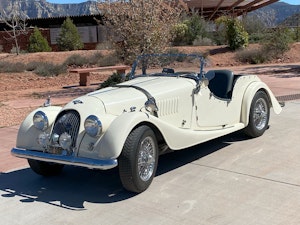
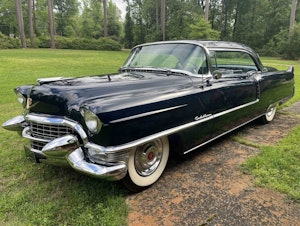

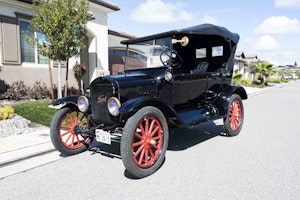
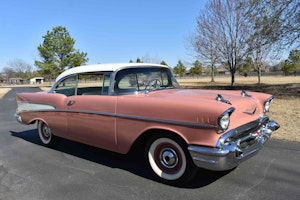

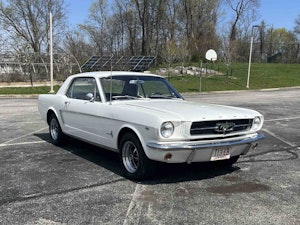
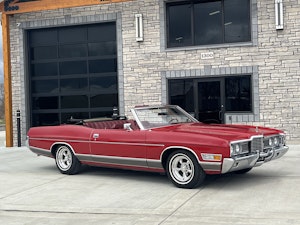
















It would make sense to show a picture of each “inspiration model” in the article.
I think concepts and publicity stunt cars vs. actual production models should be two different articles.
The Nissan IDx not being called a 510 and produced is a huge shame.
Retro is just lazy design work.
At a Ford design meeting, i once said, “Retro design is just one way of saying that we haven’t had any good ideas lately”. They never invited me back to any design meetings.
The A110 has to be one of the best retro comebacks of all time a car no one saw coming that and it’s like nothing else
One of the best looking and driving cars better yet it’s still one of the most affordable sports cars so it’s not too far off to enjoy an experience like this one
The R3 is a neat little thing hopefully it can help introduce sustainable and affordable EVs to the masses
The new Z however is such a miss being such an outdated car that falls behind the competition and market
The new Scout Traveler and Terra should be on this list as this is the return of an American icon
Agree. The Alpine is the best of this breed. And never to be seen in the US.
It’s easy to be a critic and designing a car is hard. As they say ‘packaging’ all the components is the very first step and so you’re restricted to those parameters to begin with as well as many others. Also, given how long the automobile has been with us, its damn near impossible to come up with something that hasn’t been done. How many variations of a C pillar are there? So you’re trying to blend certain common elements in a new way. to create a unique design. No easy trick. When it comes to mass produced vehicles people do like a certain amount of familiarity. Lets be honest it’s the 21st century and we’re still using vinyl siding with imitation wood grain and zip screwing nonfunctional shutters next to the windows. Why I have no idea. It’s not fooling anyone into believing the house was built in 1882. Why not something today instead? The retro look description is unfortunately often put on a modern interpretation of previous model even though there may not be much retro looking about it. Only hints or references to a previous model. It really comes down to how well this was done. When asked what my dream car would be I always say- “Let me show you some sketches.” I’d rather have one of those than a packed garage full of production models. Designing a unique yet attractive car that doesn’t look to much this or too much that, is a lot harder than you’d think.